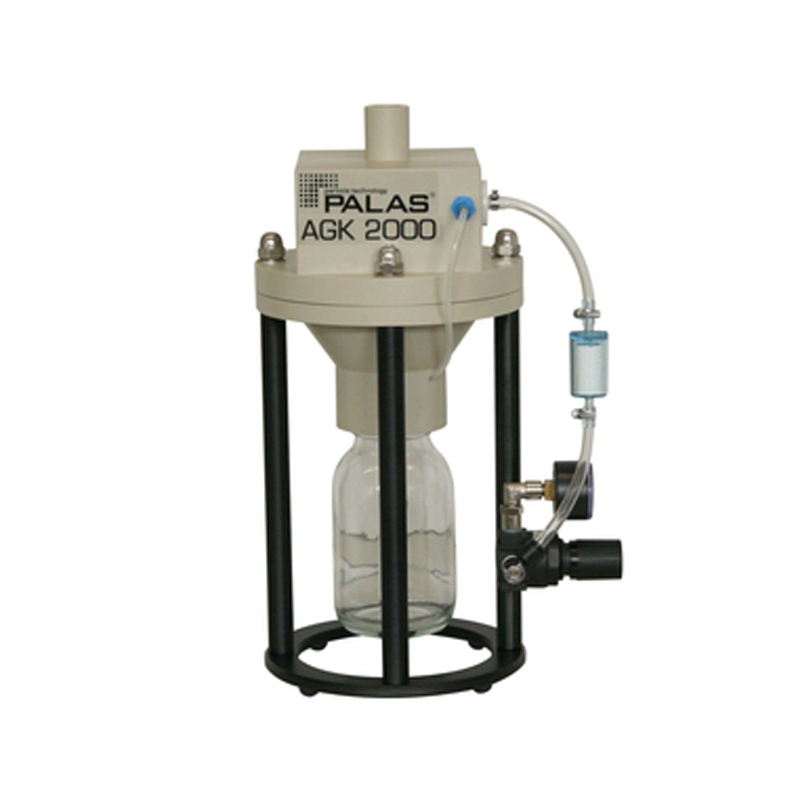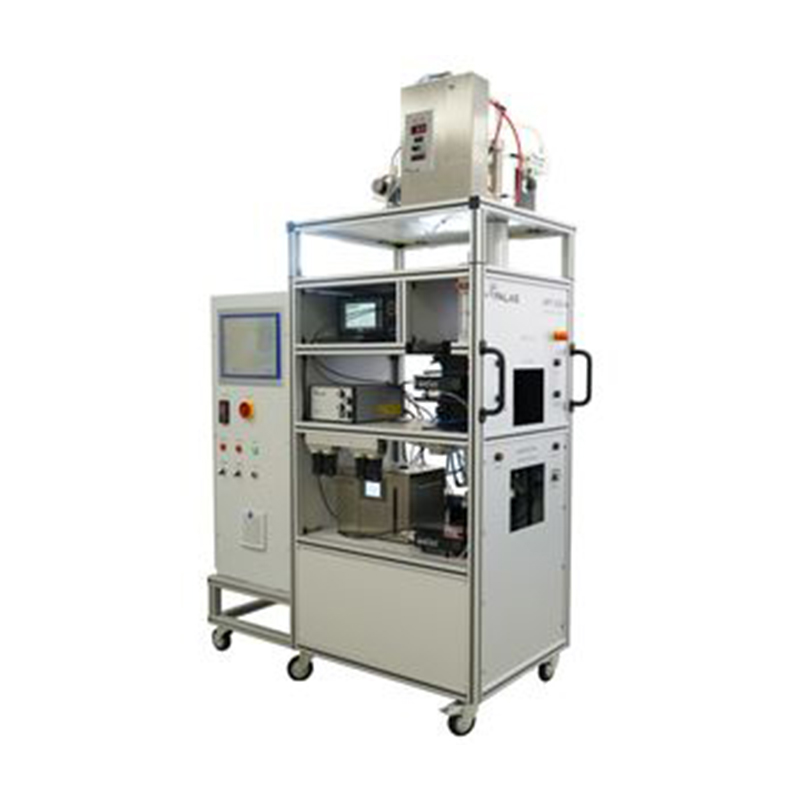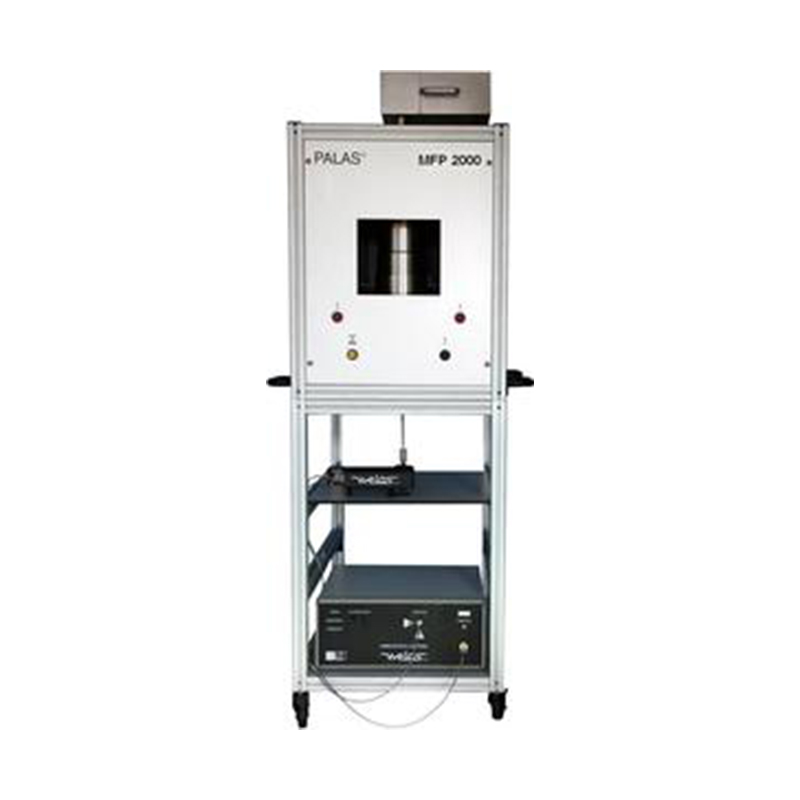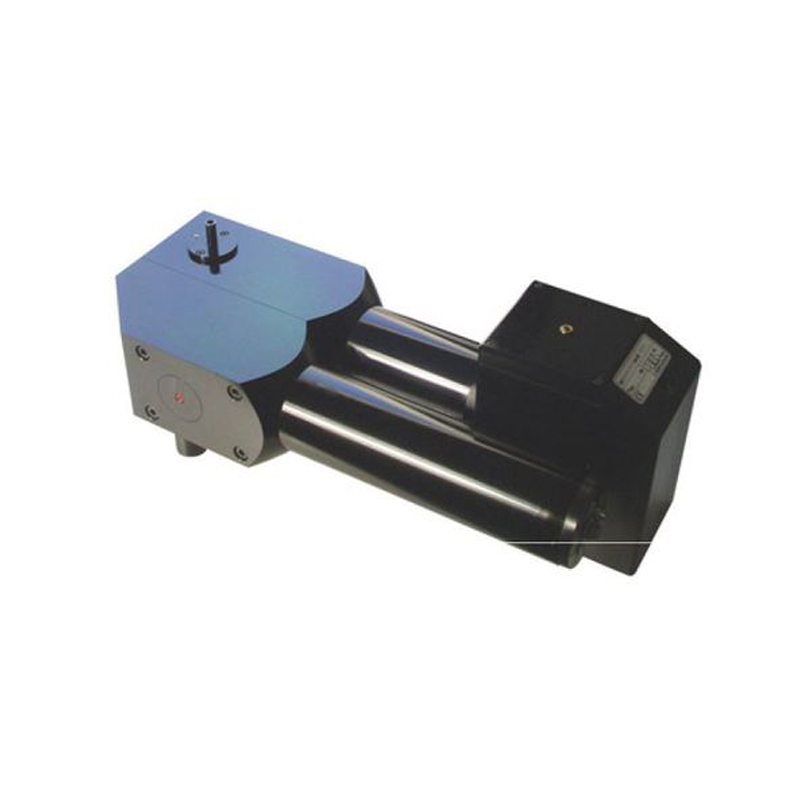Description

Fig. 1: AGK 2000 with vertical or curved drying section
Solid particle aerosols produced from suspensions, e.g. with biological agents, and solutions such as NaCl and KCl, are required for numerous applications in research, development and quality assurance. NaCl/KCl aerosols or aerosols produced from biological agents are prescribed as test aerosols in various standards to ensure comparability of filter media, measuring equipment and filters. Test aerosols, to deserve to be called such, must be generated consistently in terms of particle size distribution and particle concentration over the test time period. Furthermore, it must be possible to reproducibly produce the particle size distribution and the concentration. A specially developed nozzle ensures that these requirements are met by preventing the crystallization of the salt crystals at the nozzle outlet. The particle size spectrum can thus be adjusted reproducibly in the range from approx. 5 nm up to 15 µm, depending on the concentration of the solution. The AGK 2000 isavailable with straight or curved drying column and optionally pressure-resistant up to 10 bar.
Function
For dispersing liquids, suspensions and solutions, two-substance nozzles are mostly used. For dispersing salt solutions, the conventional atomization methods, such as that of the Collison Nebulizer, that was also built by Palas® , are not particularly suitable, since salt crystals precipitate at the nozzle outlet and lead to partial obstruction of the nozzle system.

Fig. 2: Schematic diagram of the AGK 2000 with cyclone
A special nozzle developed by Palas® enables the atomization of salt solutions with highest dosing constancy.
Measurement data
Dependency of the particle distribution from the concentration of the solution (Figs. 3 and 4). Measuring device: welas® digital system from Palas®.

Fig. 3: Representation of the volume-based integral distribution of a 20 % KCl solution and a 0.15 KCl solution

Fig. 4: Representation of the number size distribution of a 20 % KCl solution




